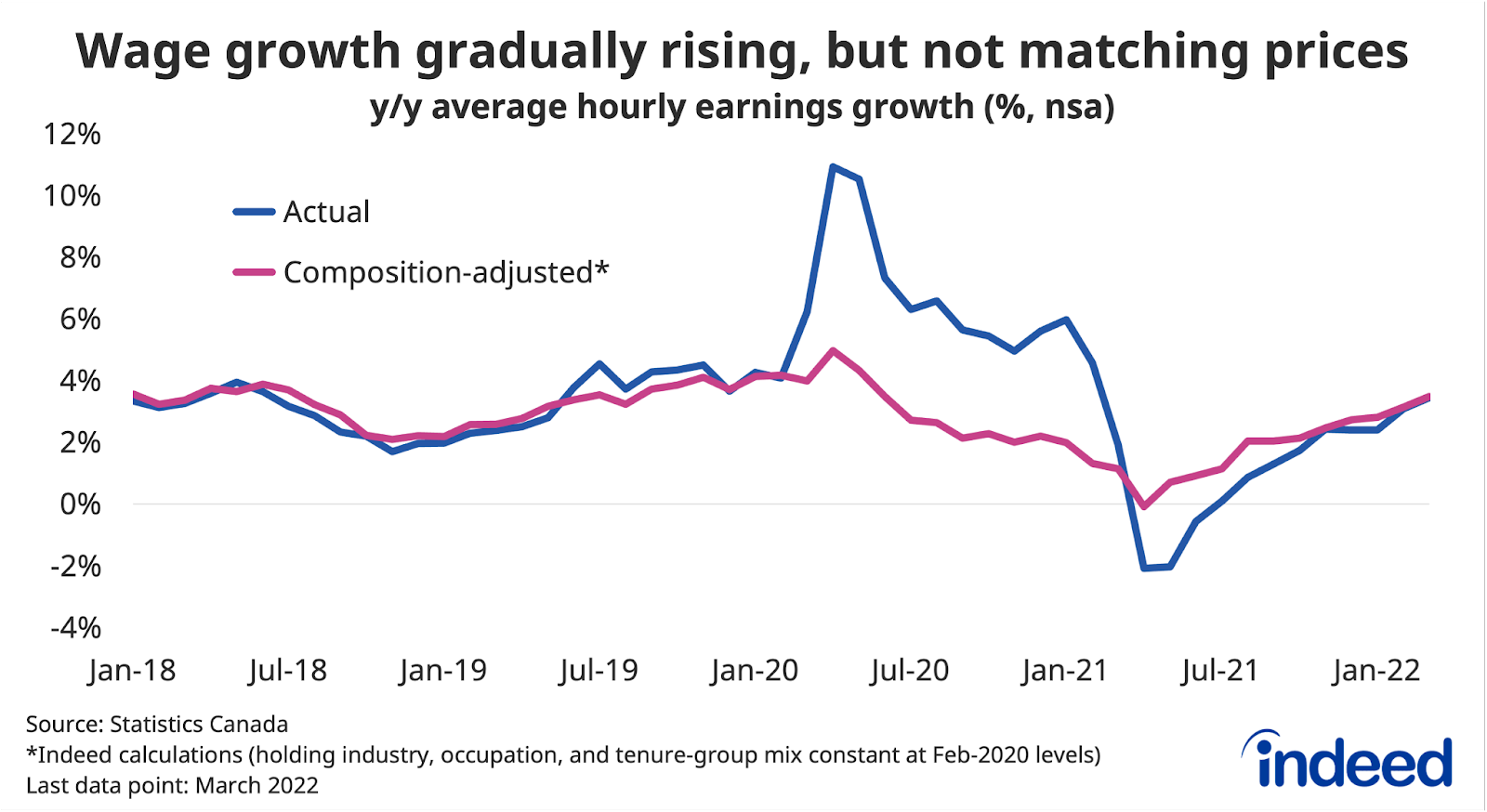Canada’s job market momentum continued in March, with employment rising at a solid pace after jumping up in February. Hours worked rose at an even faster rate than employment, with full-time positions leading net job gains. A range of industries posted growth, including sectors like accommodation and food service, where employment remains well below pre-pandemic levels.
Conditions that prevailed in February 2020 have been a natural yardstick to judge the Canadian labour market throughout the pandemic. However, despite the strong job market at the time, it has become increasingly clear that employment rates today have further room to run. This is even the case for the headline employment-to-population ratio, which is now a hair above its pre-pandemic rate, despite the population continuously aging over the past two years. The types of positions people are working in have also shifted in a positive direction, with growth led by occupations requiring university education.
At this point, the quantity of jobs in the economy is no longer the most pressing issue facing the labour market. Rather, it’s how far paychecks are going amid today’s high inflation environment. Average hourly wage growth ticked up from 3.1% to 3.4% year-over-year in March, but still trail the pace of price growth. Low unemployment rates and elevated levels of job postings suggest conditions should be ripe for faster wage growth, but Canadian paychecks aren’t shifting as fast as prices in the global economy.






